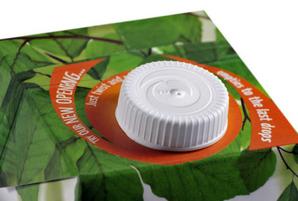By Jim Johnson
SENIOR STAFF REPORTER
Published: July 10, 2014 1:10 pm ET
Updated: July 10, 2014 1:59 pm ET

Image By: Tetra Pak Inc.
Tetra Pak Inc.'s LightCap 30 is made from bio-based plastic and is engineered to require less plastic.
Tetra Pak Inc. is launching a new campaign to promote the importance of responsible material sourcing in the consumer products goods industry.
Dubbed “Moving To The Front,” the campaign seeks to place a focus on the use of renewable resources — packaging materials that can be regrown or replenished naturally — to protect world’s finite resources.
As part of the campaign, the company is out with a white paper, “What is Renewability in Packaging and Why Should We Care?”
The campaign is targeting suppliers, manufacturers, brand owners, non-government organizations and others to expand their focus beyond the middle and end of the packaging lifecycle “to the beginning,” the company said.
“While recycling will continue to be a key part of a restorative circular economy, it is not the only component,” said Elisabeth Comere, Vernon Hills, Ill.-based director of environment and governmental affairs at Tetra Pak, in a statement.
Tetra Pak is known as a supplier of shelf-stable aseptic packaging and processing equipment. Aseptic packaging is made from paperboard as well as layers of polyethylene and aluminum foil. The company has also begun using bio-based plastics for caps and film.
“As we have always seen it, renewability, which is using a resource that can be regrown or replenished naturally over time, such as paperboard-based packaging and bio-based polyethylene, can have a positive impact on our global economic stability and the ongoing health and biodiversity of our planet,” Comere said in the statement.
Tetra Pak said it does not want to mitigate the importance of paying attention to the middle or the end of the lifecycle, but instead wants to put emphasis on the beginning as well.
Shelf-stable cartons contain an average of 74 percent paper, 22 percent PE and 4 percent aluminum, according to the Carton Council, a group of manufacturers including Tetra Pak. Refrigerated cartons typically contain about 80 percent paper and 20 percent PE. | 